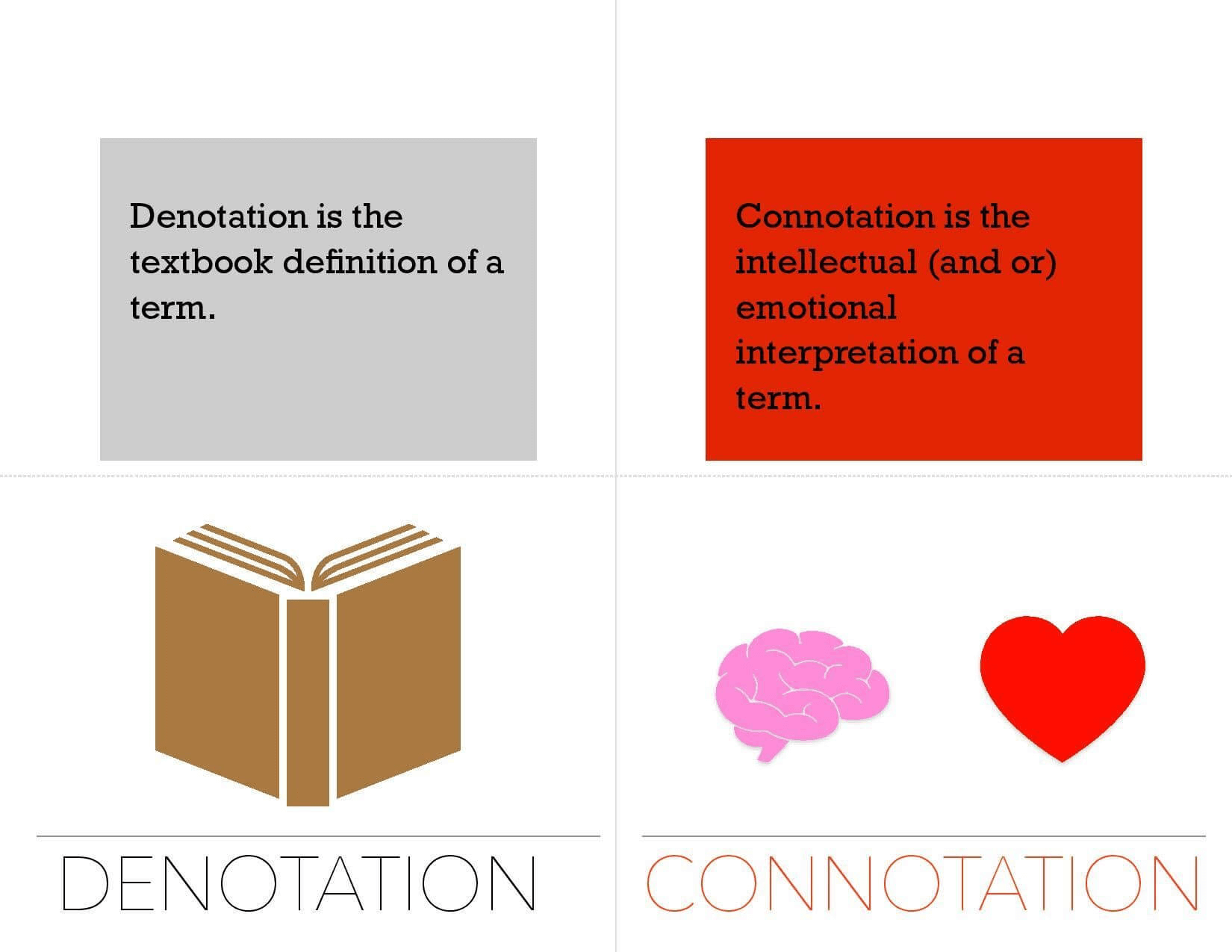Connotation vs denotation: one is subjective, the other is objective. Can you guess which is which? Fear not, no guessing required; we’re going to explain everything there is to know about connotation vs denotation by breaking down examples from literature and film. By the end, you’ll know what connotation and denotation are, and how to effectively use them in writing.
Connotation and Denotation Definition
Basis of connotation vs denotation
Connotation and denotation represent two opposite philosophies in the fields of language and semiotics. Connotation refers to the subjective interpretation of terms and objects. Denotation refers to the textbook definition of terms or objects.
For term, take the word “sick:”
Denotation of sick: poor health
Connotation of sick: impressive or exciting
The word “sick” means two different things depending on context and whether or not it’s connotative or denotative.
For object, take a four-leaf clover:
Denotation of four-leaf clover: a trifolium clover with four-leaves
Connotation: a good luck charm
We know that four-leaf clovers are just that… four-leaf clovers – but we also know that they hold connotative weight as a good-luck charm.

Difference Between Connotation and Denotation • Connotation vs Denotation
Connotation and denotation help us understand terms and objects metaphorically and literally, respectively. We’re going to jump into some specific examples in a bit, but first, let’s define connotation.
CONNOTATION DEFINITION
What is connotation?
Connotation is a non-literal framing of a term that intends to add an association beyond its literal meaning. Connotations can have negative, neutral or positive implications on a term. Take happiness as the neutral for example: the negative connotation of happiness could be mania and the positive connotation could be vibrancy.
Types of Connotation:
- Negative – when a word or symbol has a non-literal association that we regard as bad.
- Neutral – when a word or symbol has a non-literal association that we don’t regard as good or bad.
- Positive – when a word or symbol has a non-literal association that we regard as good.
Connotative vs Denotative Meaning
Connotation examples
We’ve already briefly touched on the difference between connotation and denotation in terms and objects, but let’s go over a few more examples here:
TERMS
Here are a couple denotative examples and connotative interpretations of popular terms:
1a) Denotation of fly: to take flight; i.e., “The plane can fly to another city.”
1b) Connotation of fly: stylish; i.e., “That jacket is pretty fly.”
2a) Denotation of player: one who plays; i.e., “The Red Sox have a great player at third base.”
2b) Connotation of player: one who dates many different people; i.e., “That guy is a total player.”
Remember, connotation can be used positively, negatively, and neutrally. So, let’s break down an example of a term with positive, negative, and neutral connotations.
- Positive connotation of aged: vintage
- Neutral connotation of aged: old
- Negative connotation of aged: decrepit
Here, we see the connotation of “aged” communicated in three different ways; and there are dozens more ways to communicate it too!
OBJECTS
Objects are interpreted beyond their denotative meaning through a lens known as semiotics. What is semiotics? Semiotics is simply the study of signs and symbols. Here a couple examples:
1a) Denotation of cross: two intersecting lines, usually perpendicular
1b) Connotation of cross: symbol for the crucifixion of Christ; x-mark in lettering; etc.
2a) Denotation of apple: an edible fruit grown from an apple tree
2b) Connotation of apple: technology company; forbidden fruit; good student; etc.
Connotation essentially says that any object can be interpreted in a variety of ways.
Citizen Kane – which is frequently cited as the greatest film of all-time – is dedicated to the interpretations of a single term: “rosebud.” This video breaks down the multiple meanings of rosebud in further detail.
Connotation vs Denotation Examples • The Meanings of Rosebud, Examined by Cinema Absurdist
The exploration of rosebud is a study in connotation vs denotation. If you want to learn more, check out our Citizen Kane screenplay analysis.
Learn more about connotation →
Now, let’s define denotation.
DENOTATION DEFINITION
What is denotation?
A denotation is a literal framing of a term or sign. Denotations have no subjective, symbolic or otherwise non-literal meaning. Take the term "hot" for example: the denotation of hot is having or giving off heat. Consequently, the connotation of hot could be used to suggest the attractiveness of a person. In short, denotation is using words exactly how they are meant to be understood.
Characteristics of Denotation:
- Literal
- Objective
- Applied Constantly
Difference Between Connotation and Denotation
Denotation examples
We’re going to keep this section brief since we already went over a lot of denotation examples in the previous sections. Denotation is simply the textbook definition of terms and objects.
For example:
The denotation of hot is elevated temperature; any meaning beyond “elevated temperature” is derived through connotation.
However, there is an important distinction regarding denotation; that is, some words that are spelt the same way have different denotations. These words are called homonyms – here’s an example:
1a) Denotation of bark – a sound a dog makes
1b) Denotation of bark – the substance that comprises the outer layer of a tree
Homonyms can only be interpreted through the use of context. This video breaks down homonyms in further detail.
Connotation vs Denotation Examples • Homonyms, Examined by D!NG
The term malapropism refers to when a person incorrectly uses one word in place of a word that sounds similar. As writers develop their craft, they’re able to distinguish similar-sounding words to (mostly) exclude malapropisms. But still, there’s no denying homonyms play an important role in linguistics.
Up Next
What is Litotes – Definition & Examples
Connotation and denotation form the basis of much of what we consider language theory. Want to learn more about language theory? Check out our next article on litotes, where we break down litote examples in Beowulf, Ferris Bueller’s Day Off, and more. By the end, you’ll know how to recognize and use double negatives.

Absolutely cool
Absolutely superb
cool
Very detailed and easy to understand
Awesome